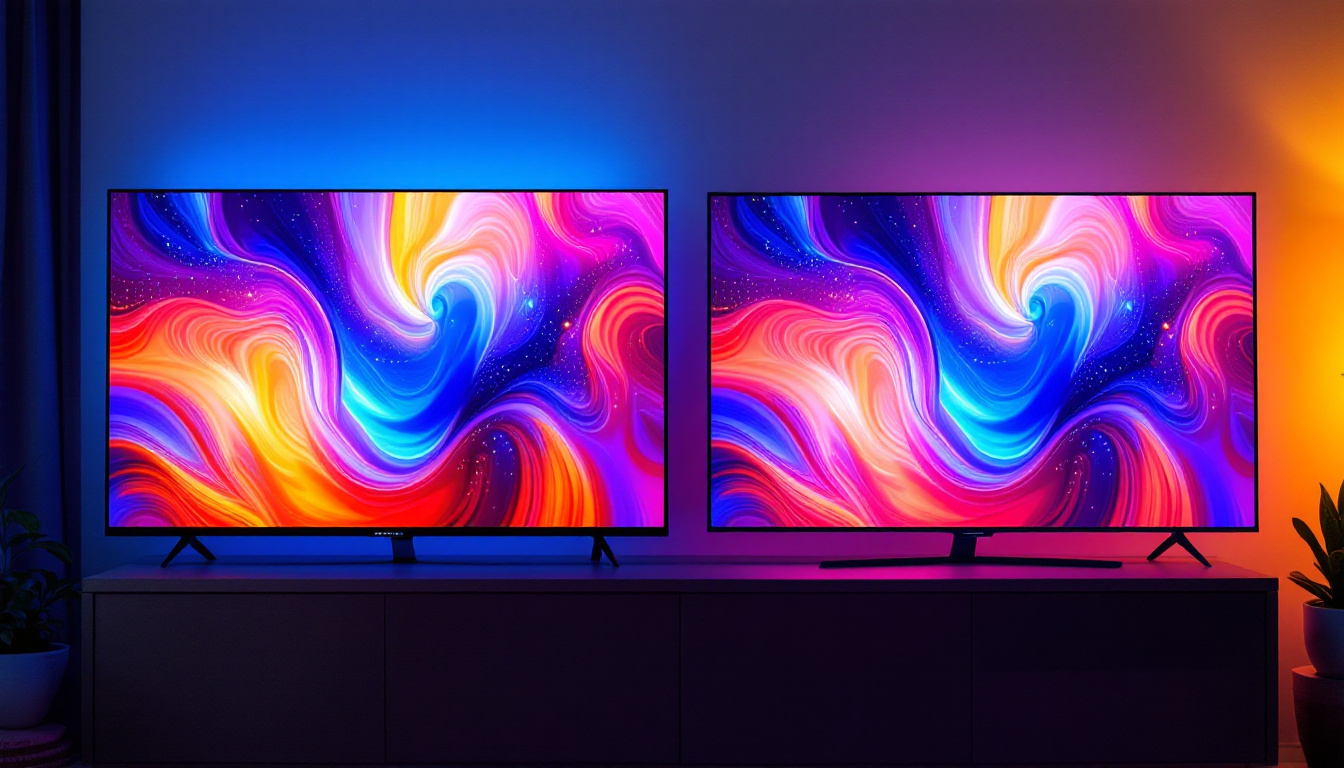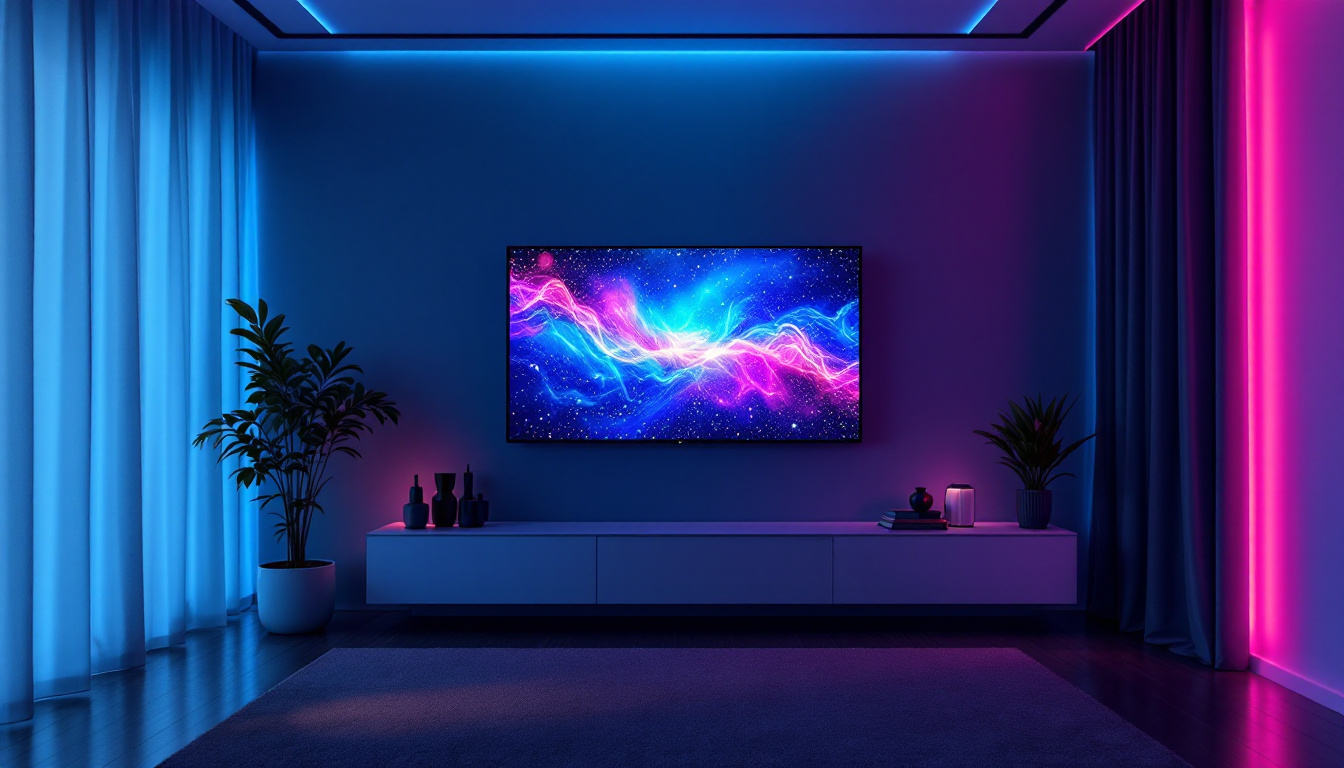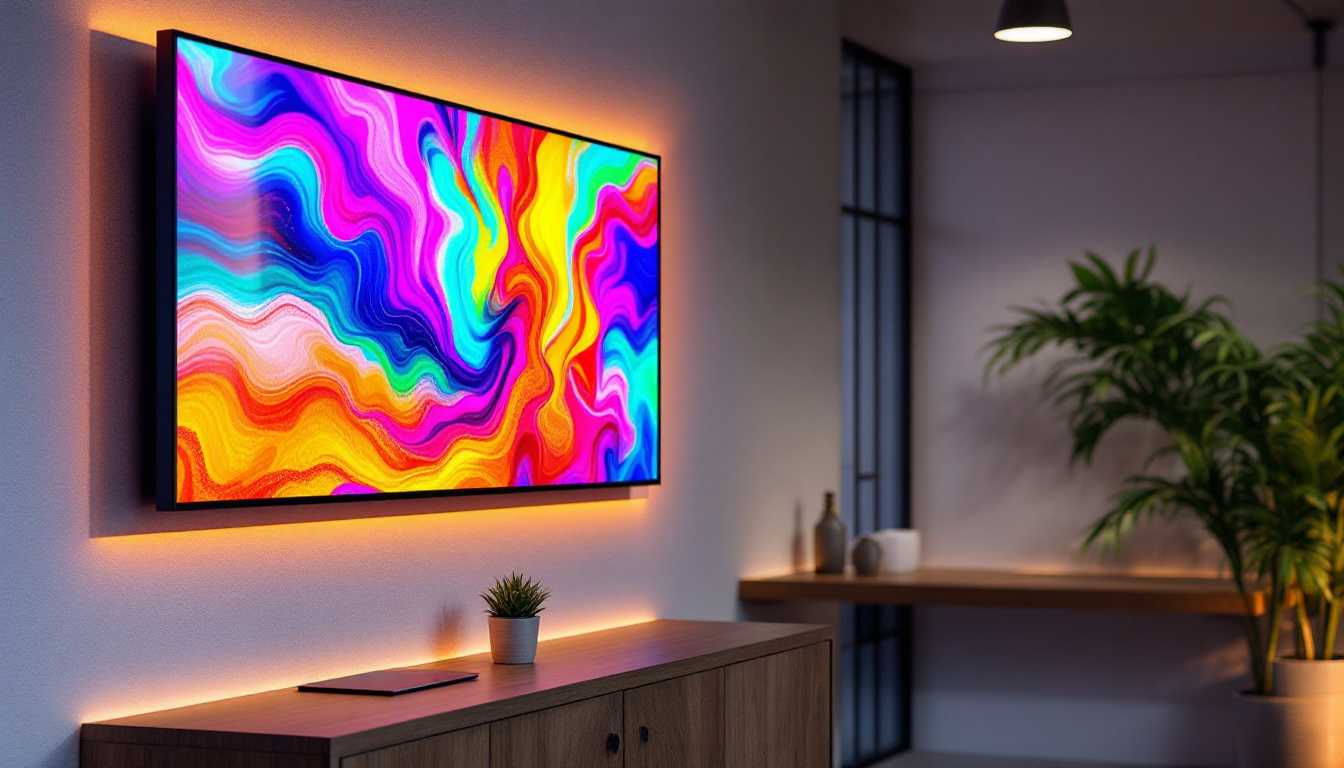In the world of television technology, the terms LED and LCD often come up in discussions about display quality, energy efficiency, and overall performance. Understanding the differences between these two types of televisions is crucial for consumers looking to make an informed purchase. This article delves into the distinctions between LED and LCD TVs, focusing particularly on the LED display technology.
Understanding LCD Technology
Liquid Crystal Display (LCD) technology has been a staple in the television industry for many years. It utilizes liquid crystals sandwiched between two layers of glass or plastic, which are illuminated by a backlight. The backlight is essential, as it provides the necessary brightness for the images displayed on the screen. This technology has revolutionized the way we experience visual media, offering a compact and efficient alternative to traditional display methods.
As LCD technology has evolved, it has found applications beyond televisions, including computer monitors, smartphones, and even digital signage. The versatility of LCDs makes them a popular choice in various industries, from consumer electronics to medical devices. Their ability to produce sharp images and vibrant colors has made them an integral part of modern life, allowing for immersive viewing experiences whether at home or on the go.
How LCD Works
When an electric current passes through the liquid crystals, they align in a way that allows varying amounts of light to pass through. This process creates the images seen on the screen. The quality of an LCD TV heavily depends on the type of backlighting used, which can significantly affect color accuracy and contrast. Additionally, the arrangement of the liquid crystals and the precision of the manufacturing process play crucial roles in determining the overall performance of the display.
Moreover, advancements in technology have led to the development of various LCD panel types, such as IPS (In-Plane Switching) and TN (Twisted Nematic). IPS panels are known for their superior color reproduction and wider viewing angles, making them ideal for applications where color accuracy is paramount. In contrast, TN panels are typically faster and more affordable, making them popular in gaming monitors where response time is critical.
Types of LCD Backlighting
There are primarily two types of backlighting used in LCD TVs: CCFL (Cold Cathode Fluorescent Lamp) and LED (Light Emitting Diode). CCFLs are older technology and generally provide less brightness and contrast compared to LEDs. On the other hand, LED backlighting has become the standard due to its superior performance. LED technology not only enhances brightness but also allows for more energy-efficient designs, contributing to lower electricity bills and a reduced carbon footprint.
Within the realm of LED backlighting, there are further distinctions, such as edge-lit and full-array backlighting. Edge-lit LED displays have LEDs positioned along the edges of the screen, which can lead to thinner designs but may result in uneven lighting. Full-array backlighting, however, places LEDs directly behind the screen, allowing for more uniform brightness and improved local dimming capabilities, which enhances contrast ratios and overall picture quality.
Advantages and Disadvantages of LCD TVs
LCD TVs are known for their lightweight design and slim profiles, making them easy to mount on walls. They also consume less power than older CRT (Cathode Ray Tube) models. However, they may struggle with viewing angles and color reproduction compared to newer technologies like OLED (Organic Light Emitting Diode). While LCDs can produce bright and vibrant images, they often face challenges in displaying true blacks, as the backlight can bleed through the liquid crystals.
Despite these limitations, LCD technology continues to improve, with manufacturers implementing various techniques to enhance performance. For instance, advancements in quantum dot technology have allowed LCDs to achieve better color accuracy and wider color gamuts, bringing them closer to the performance of OLED displays. As the market evolves, LCDs remain a popular choice for consumers seeking a balance of quality, affordability, and versatility in their viewing experience.
Introduction to LED Technology
LED TVs are essentially a type of LCD TV that uses LED backlighting instead of traditional CCFLs. This distinction is crucial as it impacts the overall performance and viewing experience. LED technology has revolutionized the television market, providing consumers with improved picture quality and energy efficiency.
How LED Backlighting Works
LED backlighting can be categorized into two main types: edge-lit and full-array. Edge-lit LED TVs have LEDs positioned along the edges of the screen, while full-array models feature a grid of LEDs behind the entire screen. Full-array backlighting typically offers better contrast and uniformity in brightness, enhancing the viewing experience.
Benefits of LED Displays
One of the most significant advantages of LED displays is their ability to produce brighter images with higher contrast ratios. This is particularly beneficial in brightly lit rooms where ambient light can wash out the picture quality. Additionally, LED TVs are generally more energy-efficient, leading to lower electricity bills over time.
Potential Drawbacks of LED TVs
Despite their many advantages, LED TVs are not without their drawbacks. Some models may experience issues with uniformity, such as “blooming” or “light bleed,” where bright areas of the screen can spill over into darker areas. Furthermore, while LED TVs can achieve impressive brightness levels, they may not offer the same depth of color as OLED displays.
Key Differences Between LED and LCD TVs
While LED and LCD are often used interchangeably, they are not the same. Understanding their differences can help consumers make better choices when selecting a television.
Display Technology
The primary difference lies in the backlighting technology. LCD TVs utilize CCFL backlighting, while LED TVs use LEDs. This fundamental difference affects brightness, contrast, and color accuracy. LED TVs tend to outperform traditional LCDs in these areas, leading to a more vibrant viewing experience.
Picture Quality
Picture quality is another area where LED TVs excel. With their ability to produce deeper blacks and brighter whites, LED displays provide a more dynamic range of colors. This is particularly noticeable in scenes with high contrast, where the differences between light and dark can be striking.
Energy Efficiency
Energy efficiency is a significant consideration for many consumers. LED TVs are generally more energy-efficient than traditional LCDs due to their advanced backlighting technology. This not only results in lower energy consumption but also contributes to a reduced carbon footprint.
Comparing Costs
When it comes to purchasing a new television, cost is often a determining factor. The price of LED TVs has decreased significantly over the years, making them more accessible to a broader audience. However, the initial cost can still be higher than that of traditional LCD TVs.
Initial Investment
While LED TVs may require a higher upfront investment, their long-term savings in energy costs can offset this. Additionally, the enhanced picture quality and features often justify the price difference for many consumers, especially those who prioritize a premium viewing experience.
Long-Term Value
Investing in an LED TV can provide long-term value due to their durability and energy efficiency. As technology continues to advance, LED TVs are likely to remain a popular choice, ensuring that consumers get their money’s worth over time.
Choosing the Right TV for Your Needs
With so many options available in the market, selecting the right television can be overwhelming. It is essential to consider various factors, including viewing habits, room lighting, and budget, before making a decision.
Viewing Environment
The lighting conditions in the room where the TV will be placed play a crucial role in determining the best type of television. For bright rooms, an LED TV may be more suitable due to its superior brightness and contrast capabilities. Conversely, if the viewing environment is darker, a high-quality LCD TV might suffice.
Content Consumption
Consider the type of content that will be primarily viewed on the television. For those who enjoy watching movies or playing video games, investing in an LED TV can enhance the overall experience with its vibrant colors and sharp images. On the other hand, casual viewers may find a standard LCD TV meets their needs.
Budget Considerations
Finally, budget plays a significant role in the decision-making process. While LED TVs offer many benefits, they can be more expensive than traditional LCDs. It is essential to weigh the advantages against the cost and determine what features are most important for individual viewing preferences.
The Future of Television Technology
As technology continues to evolve, the television industry is witnessing rapid advancements. Emerging technologies like OLED and MicroLED are gaining traction, offering even better picture quality and energy efficiency. However, LED and LCD TVs remain popular choices due to their affordability and performance.
Emerging Technologies
OLED technology, for instance, provides deeper blacks and more vibrant colors by using individual pixels that emit their light. This technology has garnered attention for its superior performance, but it often comes at a higher price point. MicroLED is another promising technology that combines the benefits of LED and OLED, offering high brightness and contrast without the drawbacks of traditional displays.
Consumer Trends
consumer preferences are shifting towards larger screens and higher resolutions, such as 4K and 8K. As a result, manufacturers are focusing on developing TVs that meet these demands while incorporating advanced technologies. LED and LCD TVs are likely to adapt to these trends, ensuring they remain relevant in a competitive market.
Conclusion
In summary, understanding the differences between LED and LCD TVs is essential for making an informed decision when purchasing a television. LED TVs, with their advanced backlighting technology, offer superior picture quality, energy efficiency, and overall performance compared to traditional LCDs. However, each consumer’s needs and preferences will ultimately dictate the best choice for their viewing experience.
As technology continues to evolve, both LED and LCD TVs will likely adapt to meet changing consumer demands. By considering factors such as viewing environment, content consumption, and budget, individuals can select the television that best suits their needs, ensuring an enjoyable viewing experience for years to come.
Explore Cutting-Edge LED Displays with LumenMatrix
Ready to elevate your viewing experience with the latest in LED display technology? Look no further than LumenMatrix, a pioneer in crafting visually stunning and innovative LED solutions. From vibrant Indoor and Outdoor LED Wall Displays to dynamic Vehicle and Sports LED Displays, LumenMatrix offers a wide array of products designed to bring your visual communication to life. Whether you’re looking to captivate your audience with a Custom LED Display or seeking the sleek design of an All-in-One LED Display, LumenMatrix has the solution to meet your needs. Check out LumenMatrix LED Display Solutions today and discover how you can transform your space with unparalleled brightness, clarity, and impact.































